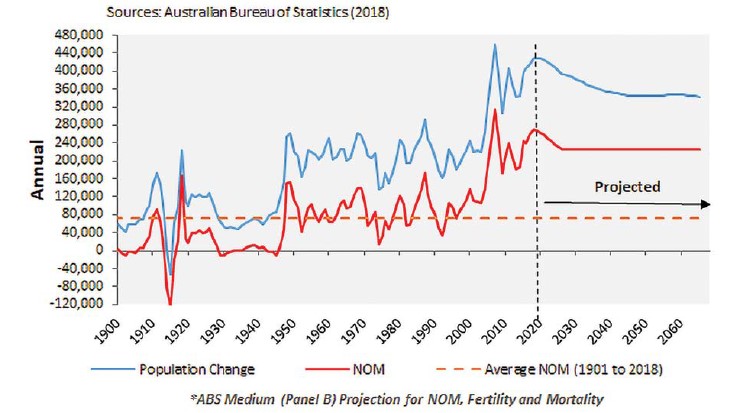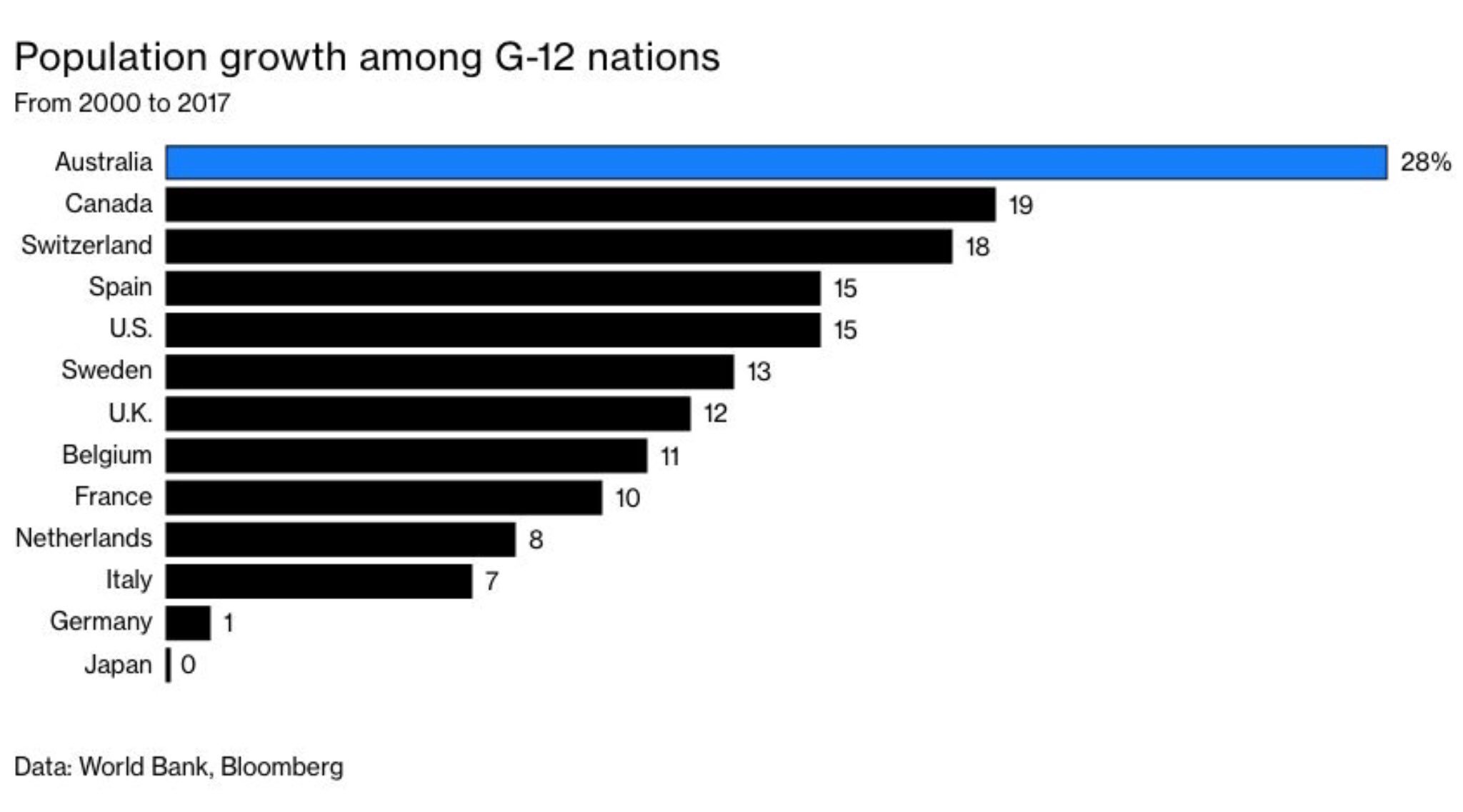Australian politicians never tire of telling the public how they are investing record amounts in infrastructure. Barely a day goes by without a minister announcing a new "congestion busting" infrastructure project designed to ease bottlenecks in Australian cities. Malcolm Turnbull said he wanted to be known as an "infrastructure prime minister". His predecessor, Tony Abbott, sought the same title. The current government under Scott Morrison has been widely touting its $100 billion infrastructure pipeline since its last budget.
Yet, even with the hundreds of billions of dollars sunk into new projects, infrastructure supply has not caught up with demand. No matter how much we borrow and build, Australia continues to resemble a dog chasing its own tail when it comes to infrastructure provision. And, as a new report argues, the infrastructure shortfall will only worsen - unless Australia's extraordinary rate of population growth is substantially reduced.
Launched in November by former New South Wales Premier Bob Carr on behalf of Sustainable Population Australia, the report - entitled "Population Growth and Infrastructure in Australia: The Catch-Up Illusion" - shows that sustained rapid population growth is resulting in a massive and growing infrastructure backlog, particularly in our largest cities. Consequently, the living standards of existing residents are being significantly eroded through intensifying congestion, growing infrastructure costs (e.g. toll roads and water), declining housing affordability, environmental degradation, and overall reduced amenity.
Advertisement
It is important to understand the nature and scale of the population problem. Australia's population is expanding by around 400,000 people annually - the equivalent of adding another Canberra-worth of people every 12 months or, to put it another way, the entire population of East Timor or Estonia every three years. According to the ABS, Australia gains an extra person every 1 minute and 23 seconds. Immigration is driving more than 60 percent of this population growth. As shown below, net overseas migration (NOM) numbers surged from the early-2000s, with the current immigration intake around three times the historical average.

Australia has long had a higher per capita immigration rate than comparable developed countries but the escalation in recent times is truly stupefying. Australia is currently in the midst of an immigration-fed population expansion that is both unprecedented in Australia's history and unrivalled in the developed world. The graphic below demonstrates just how abnormal Australia's population growth has been compared to that of other developed countries.

If allowed to continue at present rates, immigration will cause Australia's population to explode from 25.5 million to around 43 million over the next four-and-a-half decades. Sydney's population will swell to 9.7 million, while Melbourne will be an Asian-style megacity of 10.2 million. Both will have populations comparable in size to Australia's total population in the 1950s.
In The Catch-up Illusion, authors Leith van Onselen, Jane O'Sullivan and Peter G Cook assert that no amount of decentralisation, planning or investment will allow infrastructure to keep up with such manic population growth. They convincingly debunk the myth peddled by the Morrison Government that sending migrants to the bush is a solution to our mounting population pressures. Migrants may temporarily settle in regional areas to satisfy visa requirements but tend to gravitate toward the major cities once they have secured residency. This trend is clear in recent migrant settlement patterns.
Advertisement
Scott Morrison himself dismissed the idea of decentralisation as a realistic fix back in 2010 when he was in opposition, stating: "…to hold out some false hope that this problem's going to be solved because a Population Minister is going to fantastically move people around like has never been done before in our history, is I think unfair to the Australian people to suggest that that is realistic option, certainly in the short or medium term." Of course, Morrison has since changed his tune on decentralisation and evidently now expects Australians to believe that his government will succeed where all others have failed.
Even if meaningful decentralisation could be achieved, it would not ease the burden of delivering sufficient new infrastructure. With many regional areas already lacking adequate infrastructure, industry, jobs and even water, funnelling millions more people into regional cities and towns is likely to end in tears and misery.
The claims that Australia just needs to "plan better" and invest more in infrastructure are regularly made by Big Australia enthusiasts. However, as the Sustainable Population Australia report makes clear, the cost of providing new infrastructure across Australia's already built-out cities is prohibitive due to dis-economies of scale and the constantly moving target of a rapidly expanding population.
Discuss in our Forums
See what other readers are saying about this article!
Click here to read & post comments.
53 posts so far.